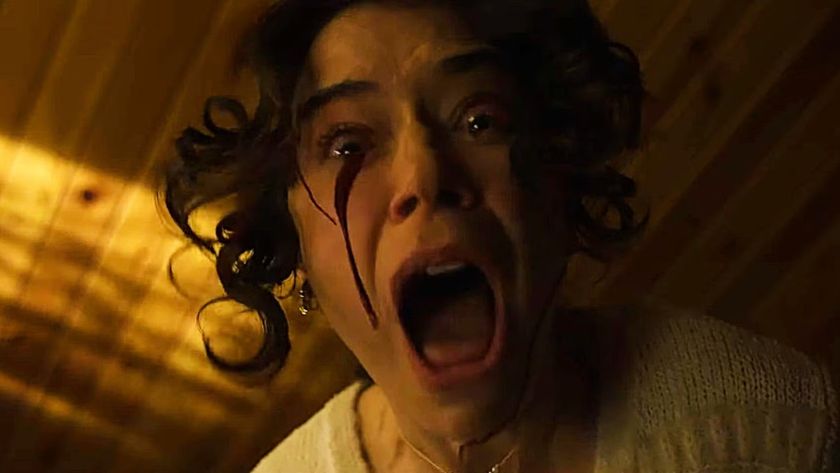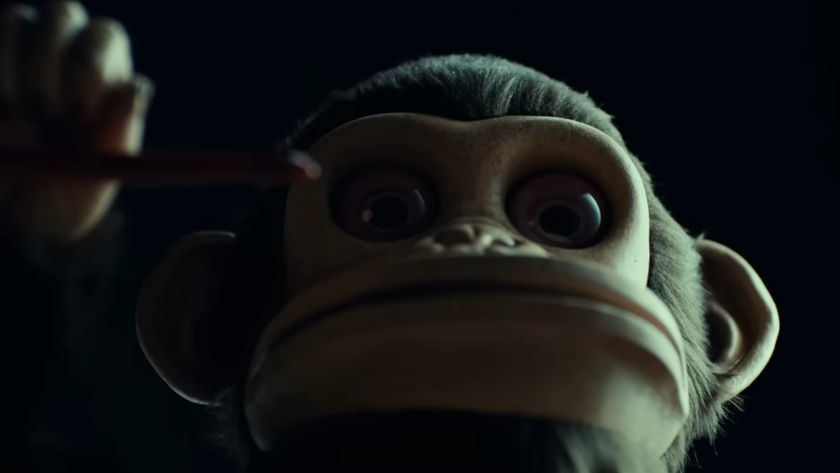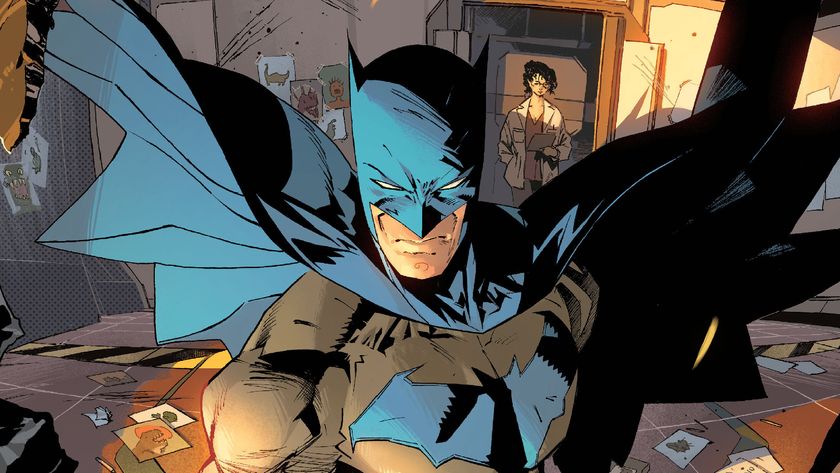The Exorcist: Believer – Why David Gordon Green and Jason Blum decided to make a new chapter
Total Film sits down with the director and famed horror producer to get the head-spinning story on The Exorcist: Believer
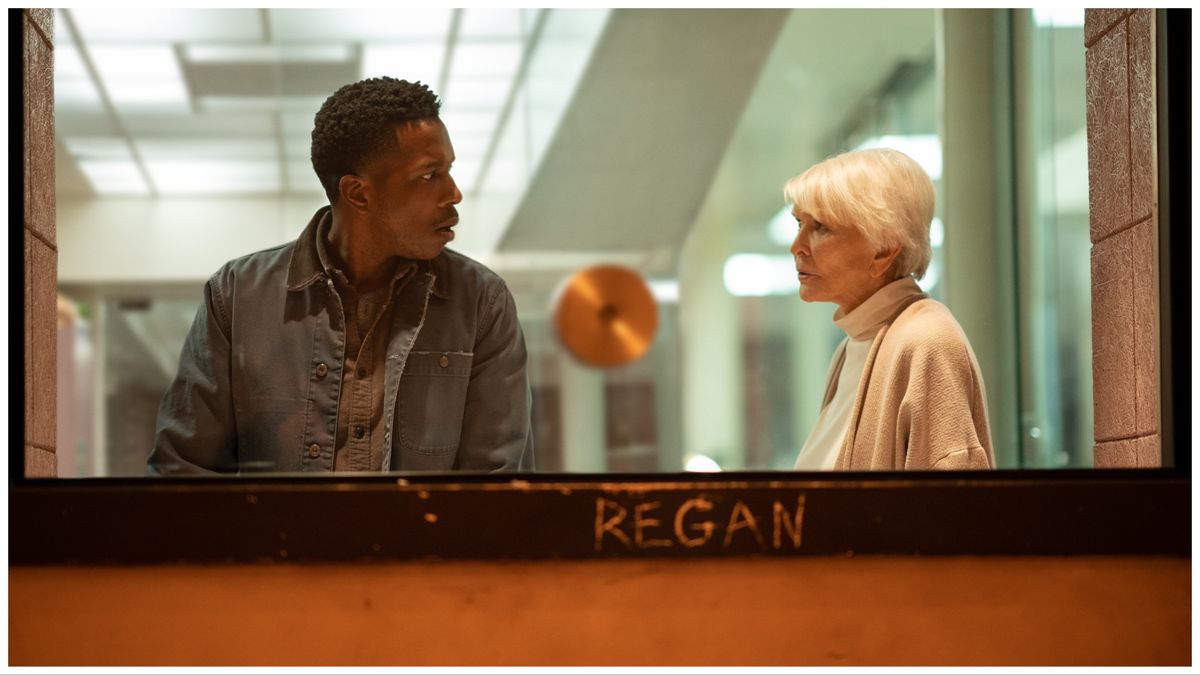
In the year of our Lord 2023, a half-century after William Friedkin changed the horror genre with The Exorcist, just how the hell do you make a worthy sequel – or, as the filmmakers prefer to put it, a "new chapter"? Think about it. Back then, no one had ever seen a movie like Friedkin's – now we've seen dozens of rip-offs. And 50 years ago, faith, and the spectre of the Devil, were part and parcel of many people's lives. Now our churches' Sunday bells attract fewer and fewer worshippers. So can a modern-day horror movie truly possess the power to compel? To not just scare viewers but shake them to their very soul?
When Total Film sits down with director David Gordon Green and producer Jason Blum to discuss The Exorcist: Believer, it's not the first time they've faced this question. It is, in fact, exactly what they were asking themselves when they decided to follow their Halloween trilogy by adopting a Holy Grail horror IP that exceeds the cultural significance of even John Carpenter's seminal slasher.
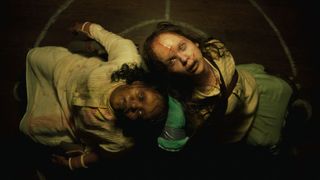
"There have been so many Halloweens – a lot of misfires – so the bar was lower," says Blum, whose horror house Blumhouse Productions has always practiced a business model of reaching large audiences with low-budget enterprises: Get Out, Happy Death Day, and the Paranormal Activity, Insidious, and Purge franchises. But The Exorcist: Believer and its two planned sequels are something different, with Universal Pictures and its streaming service, Peacock, paying $400m for the rights. "The tricky thing with The Exorcist is that even though 90% of the audience who see Believer will have not seen the first Exorcist, they will have heard about it from their parents, as the scariest movie of all time," says Blum.
"You're not going to recreate the first film," nods Green. "You're not going to outdo what it did, because it was very much a product of its time, and a lot of people didn't even know what an exorcism was when that film was coming out. It wasn't in the vernacular. That film was groundbreaking and influential."
Producer Ryan Turek agrees. An ex-journalist who co-founded website Dread Central and regularly contributed to famed genre magazine Fangoria, he's Blumhouse Productions' 'resident horror geek'.
"Audiences had never, ever seen anything like William Friedkin's movie," he reiterates. "They'd never seen the imagery. They'd never seen those themes. They'd never seen that kind of blasphemy permeating the screen. And since then, there have been decades of head-spinning children, and vile, puke-spilling kids, and kids climbing walls, and kids bending over backwards. We've seen so much."
And how about the question of faith? Or lack thereof? Can the movie succeed when so many people aren't Believers? "I think you have to embrace all of that," stresses Green. '[In The Exorcist: Believer], you have characters that have different faiths, or a lack of faith. There are many people that would look at a traditional exorcism as some sort of placebo, mind-over-matter type of experience. But what happens if you don't believe in it? Does that mean you can't be exorcised? If you aren't Catholic, is it even worth your time to open the Roman Rite? I read every book I could get my hands on. There's a diary of a Baptist exorcist. So you want all these different perspectives. And because there's certainly a large portion of our world that does feel like it's either not subscribing to a religion, or, in some cases, even lacking any spirituality – you want those types of stories and suspicions as well."
Sign up for the Total Film Newsletter
Bringing all the latest movie news, features, and reviews to your inbox
Old Habits
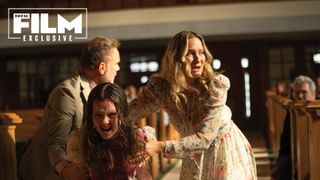
Friedkin's The Exorcist, based on William Peter Blatty's bestselling book, told of 12-year-old Regan MacNeil's terrifying possession, and the devout attempts of two priests to banish the demon. It grossed a record-breaking $441m worldwide, and was nominated for 10 Oscars. The Exorcist: Believer doubles down, with not one but two young girls (Lidya Jewett, Olivia O'Neill) possessed, and it ensures that the original's legion of fans will keep the faith by gifting us the return of Ellen Burstyn as Regan's mother, Chris. She enters the fray when one of the possessed girls' fathers (Leslie Odom Jr.) seeks her counsel.
Burstyn did not feature in any of the four Exorcist movies we've seen since the original (none of which figure in the narrative of Believer), or indeed the TV series, in which Chris MacNeil was played by Sharon Gless. To tempt her back, Green evolved the character with Burstyn's input, ensuring that the role was meaningful. "There's something a little bit deeper there that we're reaching for," says the director. "Her actual involvement and influence in the creative elements made the experience a lot more special."
Burstyn as Chris MacNeil is not the only connecting tissue to the original movie. For starters, composers David Wingo and Amman Abbasi reference, sparingly, the famous Tubular Bells score ("We thought, 'Let's create a new path while paying homage to the iconic elements,' says Wingo. "They're spot-specific. We discussed why we were bringing in those elements, and at what time," adds Abbasi). And then there are the make-up and stunts.
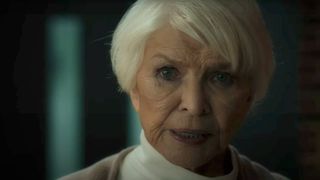
"I'm very influenced by Dick Smith's make-up team on the original film," Green starts. "There's some pretty extraordinary gymnastics that Christopher [Nelson] and his team were able to do with just make-up effects. When you've got talent like that…" He shakes his head in disbelief. "You're looking at the DNA of the Exorcist franchise, and sometimes, when you have these very capable artists, you think, 'They can do this, too.' Then you think, "Well, that would be amazing, but it's not this movie'". Same with the VFX. "Everything that you could put an animated finger to, we just said: 'What happens if we take a little bit more time, and do the tangible version?' For the most part, we're just using a lot of old-school optical effects, and in-camera tracks. There's an earthquake sequence where we're shaking the camera." He laughs. "So in terms of traditional visual effects, it ended up being more clean-up and rig removal and things like that."
Coordinating the stunts was Ashley Rae Trisler, who doubled for Jamie Lee Curtis in Green's Halloween movies. She talks excitedly, telling of the "emotional intensity" of the stunt work, of a showstopping "collapsing stairwell", and how there are "some impactful and astounding scenes that could potentially trump what people remember from 50 years ago". But she's also keen to point out that movie-making has changed, and whereas Friedkin's people gave Burstyn a serious back injury by yanking her across the room and into a wall, health and safety was Trisler's primary concern.
"Everybody kept all their limbs, and we were safe throughout the shooting," she says. "Obviously there's bumps and bruises and that kind of thing. But nothing of major concern." Green was all about comfort and security. So while Friedkin fired a gun behind lead actor Jason Miller to shake him up, and slapped the face of Father William O' Malley, a genuine priest, to capture an expression of real shock, Green looked out for his cast and crew at every turn.
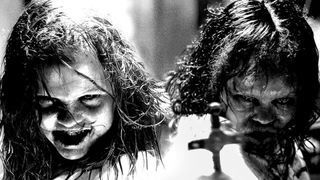
"They had talks about wanting a female [as the stunt coordinator], primarily because of them having two lead cast members that were underage females, and knowing the tenderness and touch of a female coordinator could be really, really helpful in such emotional filming," explains Trisler. Green also had spiritual advisers on set, should anyone be distressed by any of the filmed scenes they witnessed. And acting as an advisor to young actors Jewett and O'Neill was the OG of possessed kids, Linda Blair – yes, Regan MacNeil was back wrestling demons.
"We were really lucky to have Linda," says Green. "The hardships she faced during the production and after the production were certainly headlines and had an effect on her [on set, the rigged bed fractured her lower spine, while after the film came out, she was railroaded by invasive questions and received death threats by zealots claiming she'd glorified Satan]. We brought her in as an advisor because we're dealing with young people, and we want to take them to dangerous places safely."
As to whether Blair actually reprises Regan in the movie – when she was spotted on set, it of course made headlines – Green answers in the negative. But there is, perhaps, space to read between the lines. "She came to set because she was an advisor on the movie. I was really lucky to have her read the script, but she was not interested in a significant role and stepping back into that."
Is that "significant", well, significant?
Shock and Gore
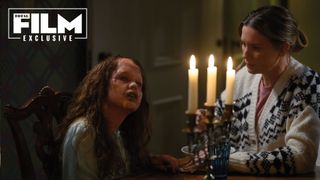
With all this talk of physical safety and mental health, Total Film finds itself circling back to the initial question: can a modern-day Exorcist movie impact like the original? Can we now, for example, even think of shooting a scene as shocking as the 'masturbation scene' in Friedkin's film, where young Regan stabs repeatedly at her bloody crotch with a crucifix?
"I think you can," muses Green. "I just think the industry has grown in the decency of the production process. You wouldn't just leave it up to the production to go knock out a sequence like that. You would have a lot of supervision, and rightly so. There was a world that wasn't watching while [Friedkin] made one of the most provocative, cinematic masterpieces of all time. Now, just as you don't really film a horse falling off a cliff any more, you would just approach it with a lot of consideration and a lot of supervision." He ponders. "I'm not just trying to push buttons and offend people. I'm not a provocateur. But I like to create an environment where my actors can go safely into dangerous places."
The good news is Green is confident that his film, like Friedkin's, can disturb viewers on a deeper level. "I spent a lot of time researching," he says, stressing how he was granted the opportunity to meet with academics and holy people. "As opposed to a Halloween sequence where you're just rubbing your hands together and designing a more gruesome kill. It's a whole different tool bag here."
"The first movie is weighted much more towards a drama than a horror movie," says Blum. "But people expect the scariest movie ever in today's language, so they expect a jump scare every seven minutes. Which, actually, I really didn't want to do."
Turek nods. "This is a really great family drama," he says. "It's a very contemporary story, with contemporary scares and a contemporary worldview."
"Everybody wants a quick fix [these days] – just an immediate adrenaline rush or a jump scare," says Green. "It's not the kind of movie I'm here to make. I want something that seeps into your pores."
Hmmm. Maybe, just maybe, it's still possible to offer a soul-shaking experience after all.
The Exorcist: Believer is out in theaters now. For more, check out our list of the most exciting upcoming movies in 2023 and beyond, or, skip right to the good stuff with our list of movie release dates.
Jamie Graham is the Editor-at-Large of Total Film magazine. You'll likely find them around these parts reviewing the biggest films on the planet and speaking to some of the biggest stars in the business – that's just what Jamie does. Jamie has also written for outlets like SFX and the Sunday Times Culture, and appeared on podcasts exploring the wondrous worlds of occult and horror.
Most Popular






